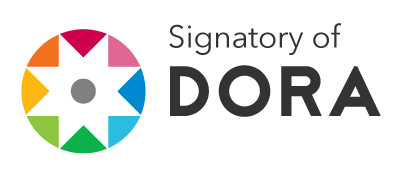Survey of Subterranean Termite (Isoptera: Rhinotermitidae) Utilization of Temperate Forests
DOI:
https://doi.org/10.13102/sociobiology.v61i2.198-206Keywords:
Formosan subterranean termites, Coptotermes formosanus Shiraki, timber stumps, mechanical inspection, hardwood, softwoodAbstract
Both native and invasive subterranean termites (Isoptera: Rhinotermitidae), including the Formosan subterranean termite, are well known pests of urban areas, but little is known about their distribution or impact in forest ecosystems of the southeastern United States. Recently harvested timber stumps were mechanically inspected for the presence of subterranean termites in multiple locations across southern Mississippi and eastern Louisiana. A systematic line plot cruise with 100 x 200m spacing and1/20thha plots was implemented, and all stumps with a diameter greater than 7.6cm were inspected. In total, 7,413 stumps were inspected for the presence of subterranean termites, and 406 of those contained native subterranean termite (Reticulitermes spp) infestations. Light traps were also placed at 8 sites to detect the presence of subterranean termite alates. While no invasive Formosan subterranean termites were found during mechanical inspection of tree stumps, alates were captured in light traps at three sites. The proportion of stumps infested with subterranean termites was negatively correlated with the number of stumps in each plot. Although 6.27% of pine stumps and 1.86% of hardwood stumps were infested, no correlation was found between subterranean termite presence and type of stump (pine or hardwood). Infestations of stumps by subterranean termites ranged from 0.94% to 14.97% depending on site.Downloads
References
Avery, T. & Burkhart, H. (2002). Forest Measurements, 5thed. New York: McGraw-Hill.
Beal, R.H. (1967). Formosan invader. Pest Control 35: 13-17. DOI: https://doi.org/10.1080/04345546709415436
Bess, H.A. (1970). Termites of Hawaii and the Oceanic Islands. In K. Krishna & F.M. Weesner (Eds.), Biology of Termites, vol 2. (pp. 449-475).New York: Academic Press, Inc.
Black, H.J. & Okawol, M.N. (1997). Agricultural intensification, soil biodiversity and agroecosystem function in the tropics: the role of termites. Applied Soil Ecology 6: 37-53. DOI: https://doi.org/10.1016/S0929-1393(96)00153-9
Chambers, D.M., Zungoli, P.A. & Hill H.S., Jr. (1988). Distribution and habitats of the Formosan subterranean termite (Isoptera: Rhinotermitidae) in South Carolina. Journal of Economic Entomology 81: 1611-1619. DOI: https://doi.org/10.1093/jee/81.6.1611
Crawley, M.J. (2007). The R book. Chichester: John Wiley & Sons, Ltd. DOI: https://doi.org/10.1002/9780470515075
Gleason, R.W. & Koehler, P.G. (1980). Termites of the eastern and southeastern United States: pictorial keys to soldiers and winged reproductives. Bulletin 192. Institute of Food and Agricultural Sciences (IFAS), University of Florida. Gainesville, Florida.
Greaves, T., Armstrong, G.J., McInnes, R.S. & Dowse, J.E. (1967). Timber losses caused by termites, decay, and fire in two coastal forests in New South Wales. Technical Paper, C.S.I.R.O. Division of Entomology, Australia 7: 2-18.
Guillot, F.S., Ring, D.R., Lax, A.R., Morgan, A., Brown, K., Riegel, C. & Boykin, D. (2010). Area-wide management of the Formosan subterranean termite, Coptotermes formosanus Shiraki (Isoptera: Rhinotermitidae), in the New Orleans French Quarter. Sociobiology 55: 311-338.
Harris, W.V. (1966). The role of termites in tropical forestry. Insectes Sociaux 8: 255-266. DOI: https://doi.org/10.1007/BF02222385
Higa, S.Y. & Tamashiro M. (1983). Swarming of the Formosan subterranean termite, Coptotermes formosanus Shiraki, in Hawaii (Isoptera: Rhinotermitidae). In Proceedings of the 24th Hawaiian Entomological Society, Honolulu, Hawaii (pp. 233-238).
La Fage, J.P. & Nutting W.L. (1978). Nutrient dynamic of termites. In M. Brian (Eds.), Production Ecology of Ants and Termites (pp. 165-232). Cambridge: Cambridge University Press.
La Fage, J.P. (1987). Practical considerations of the Formosan subterranean termite in Louisiana: a 30-year old problem. In M. Tamashiro & N.-Y. Su (Eds.), The Biology and Control of the Formosan Subterranean Termite (pp. 37-42). Hawaii: College of Tropical Agriculture and Human Resources, University of Hawaii.
Lai, P.Y., Tamashiro, M., Yates, J.R., Su, N.-Y., Fujii, J.K., & Ebesu, R.H. (1983). Living plants in Hawaii attacked by Coptotermes formosanus. In Proceedings of the 24th Hawaiian Entomological Society, Honolulu, Hawaii (pp. 283–286).
Lax, A.R. & Wiltz, B.A. (2010). Swarming of the Formosan subterranean termite (Isoptera: Rhinotermitidae) in southern Mississippi. Mid-South Entomologist 3: 18-25.
Lin, S.-Q. (1987). Present status of Coptotermes formosanus and its control in China. In M. Tamashiro & N.-Y. Su (Eds.), The Biology and Control of the Formosan Subterranean Termite (pp. 31-36). Hawaii: College of Tropical Agriculture and Human Resources, University of Hawaii.
Little, N.S. (2013). Implications for the detection, utilization, and degradation of bark beetle-attacked southern pines by subterranean termites. Dissertation, Mississippi State University, Starkville, MS.
Messenger, M.T., Su, N.-Y. & Scheffrahn, R.H. (2002). Current distribution of the Formosan subterranean termite and other termite species (Isoptera: Rhinotermitidae, Kalotermitidae) in Louisiana. Florida Entomologist 85: 580-587. DOI: https://doi.org/10.1653/0015-4040(2002)085[0580:CDOTFS]2.0.CO;2
Messenger, M.T. & Mullins, A.J. (2005). New flight distance recorded for Coptotermes formosanus (Isoptera: Rhinotermitidae). Florida Entomologist 88: 99-100. DOI: https://doi.org/10.1653/0015-4040(2005)088[0099:NFDRFC]2.0.CO;2
Morales-Ramos, J.A. & Rojas, M.G. (2001). Nutritional ecology of the Formosan subterranean termite: feeding response to commercial wood species. Journal of Economic Entomology 94: 516-523. DOI: https://doi.org/10.1603/0022-0493-94.2.516
Osbrink, W.L., Woodson, W.D. & Lax, A.R. (1999). Populations of Formosan subterranean termites established in living urban trees in New Orleans, Louisiana, U.S.A. In Proceedings of the 3rd International Conference on Urban Pests, New Orleans, Louisiana (pp. 341-345).
Peralta, R G., Menezes, E.B.G., Carvalho, A. & Aguiar-Menezes, E.L. (2004). Wood consumption rates of forest species by subterranean termites (Isoptera) under field conditions. Journal of Brazilian Forest Science 28: 283-289. DOI: https://doi.org/10.1590/S0100-67622004000200015
R Core Team. (2012). R: a language and environment for statistical computing. Austria: R Foundation for Statistical Computing.
SAS Institute. (2003). SAS Version 9.1.3. Cary, NC: SAS Institute Inc.
Schultz, R.P. (1999). Loblolly - the pine for the twenty-first century. New Forests 17: 71-88. DOI: https://doi.org/10.1007/978-94-017-2689-4_6
Smythe, R.V. & Carter, F.L. (1970). Feeding responses to sound wood by Coptotermes formosanus, Reticulitermes flavipes, and R. virginicus (Isoptera: Rhinotermitidae). Annals of the Entomological Society of America 63: 841-847. DOI: https://doi.org/10.1093/aesa/63.3.841
Su, N.-Y. (2003). Overview of the global distribution and control of the Formosan subterranean termite. Sociobiology 41: 7-16.
Su, N.-Y. & Scheffrahn R.H. (1988). Foraging population and territory of the Formosan subterranean termite (Isoptera: Rhinotermitidae) in an urban environment. Sociobiology 14: 353-359.
Su, N.-Y. & Tamashiro, M. (1986). Wood-consumption rate and survival of the Formosan subterranean termite (Isoptera: Rhinotermitidae) when fed one of six woods used commercially in Hawaii. In Proceedings of the 26th Hawaiian Entomological Society, Honolulu, Hawaii (pp. 109–113).
Sun, J.Z., Lockwood, M.E., Etheridge, J.L., Carroll, J., Holloman, C.Z., Coker, C.E.H. & Knight, P.R. (2007). Distribution of Formosan subterranean termites in Mississippi. Journal of Economic Entomology 100: 1400-1408. DOI: https://doi.org/10.1093/jee/100.4.1400
Wang, C. & Powell J. (2001). Survey of termites in the Delta Experimental Forest of Mississippi. Florida Entomologist 84: 222-226. DOI: https://doi.org/10.2307/3496170
Wang, C., Powell, J.E. & Scheffrahn, R.H. (2003). Abundance and distribution of subterranean termites in southern Mississippi forests (Isoptera: Rhinotermitidae). Sociobiology 42: 533-542.
Wood, T.G. & Sands, W.A. (1978). The role of termites in ecosystems. In M. Brian (Eds.), Production Ecology of Ants and Termites (pp. 245–292). Cambridge: Cambridge University Press.
Yamada, A., Inoue, T., Wiwatwitaya, D., Okhuma, M., Kudo, T. & Sugimoto, A. (2006). Nitrogen fixation by termites in tropical forests, Thailand. Ecosystems 9: 75-83. DOI: https://doi.org/10.1007/s10021-005-0024-7
Downloads
Published
How to Cite
Issue
Section
License
Sociobiology is a diamond open access journal which means that all content is freely available without charge to the user or his/her institution. Users are allowed to read, download, copy, distribute, print, search, or link to the full texts of the articles in this journal without asking prior permission from the publisher or the author. This is in accordance with the BOAI definition of open access.
Authors who publish with this journal agree to the following terms:
- Authors retain copyright and grant the journal right of first publication with the work simultaneously licensed under a Creative Commons Attribution License that allows others to share the work with an acknowledgement of the work's authorship and initial publication in this journal.
- Authors are able to enter into separate, additional contractual arrangements for the non-exclusive distribution of the journal's published version of the work (e.g., post it to an institutional repository or publish it in a book), with an acknowledgement of its initial publication in this journal.
- Authors are permitted and encouraged to post their work online (e.g., in institutional repositories or on their website) prior to and during the submission process, as it can lead to productive exchanges, as well as earlier and greater citation of published work (See The Effect of Open Access).


 eISSN 2447-8067
eISSN 2447-8067










